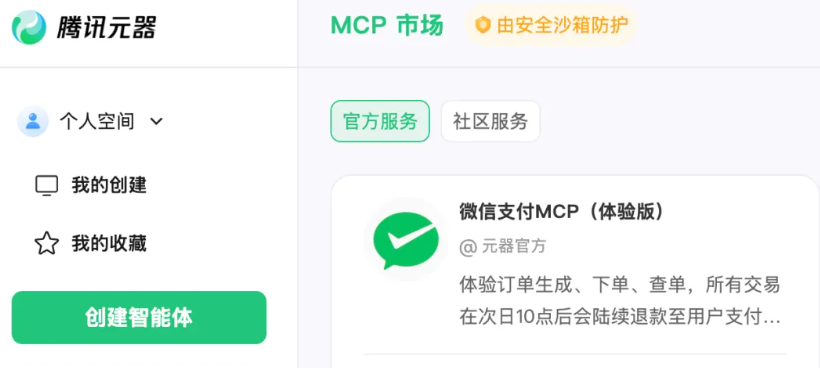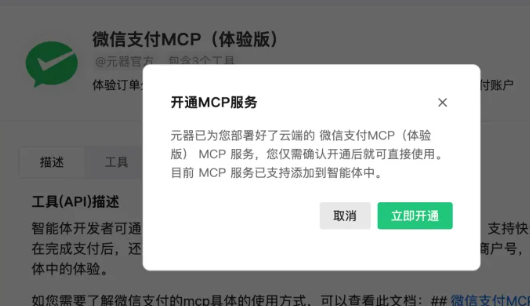Recently, WeChat Pay officially launched the MCP feature, paving the way for the commercialization of AI applications. This move not only addresses the weakness of AI in the "monetization" aspect but also shows the strategic layout of tech giants in the AI era.
Firstly, the launch of MCP opens up new revenue channels for AI-powered applications. In the past, users interacting with AI often only reached the "chatting" level, making it difficult to monetize. Now, WeChat Pay MCP allows AI to process payments directly during user interactions. For example, when a user asks the AI to create a poem, the AI can generate a payment QR code, allowing the user to pay first and then enjoy the creative result. This model simplifies the payment process and significantly improves conversion rates.
Address: https://yuanqi.tencent.com/mcp-shop

Secondly, WeChat Pay MCP is not just a payment interface, but a complete data loop. In previous business models, merchants often had to wait for data to be returned before making decisions. However, through MCP, AI can obtain payment status in real-time, thus quickly adjusting service content and pricing. This change enables merchants to optimize their return on investment (ROI) more rapidly in a constantly changing market.

Finally, MCP also turns revenue into a new data source, driving self-learning business models. Each successful transaction is not only income but also important data support for AI to continuously improve its services. Through continuous feedback, AI can enhance user lifetime value (LTV), creating more profit opportunities for merchants.
With the help of MCP payments, the scenarios for AI commercialization continue to expand, from content payment, online education to e-commerce guidance and intelligent services, with potential application scenarios that are highly anticipated.
